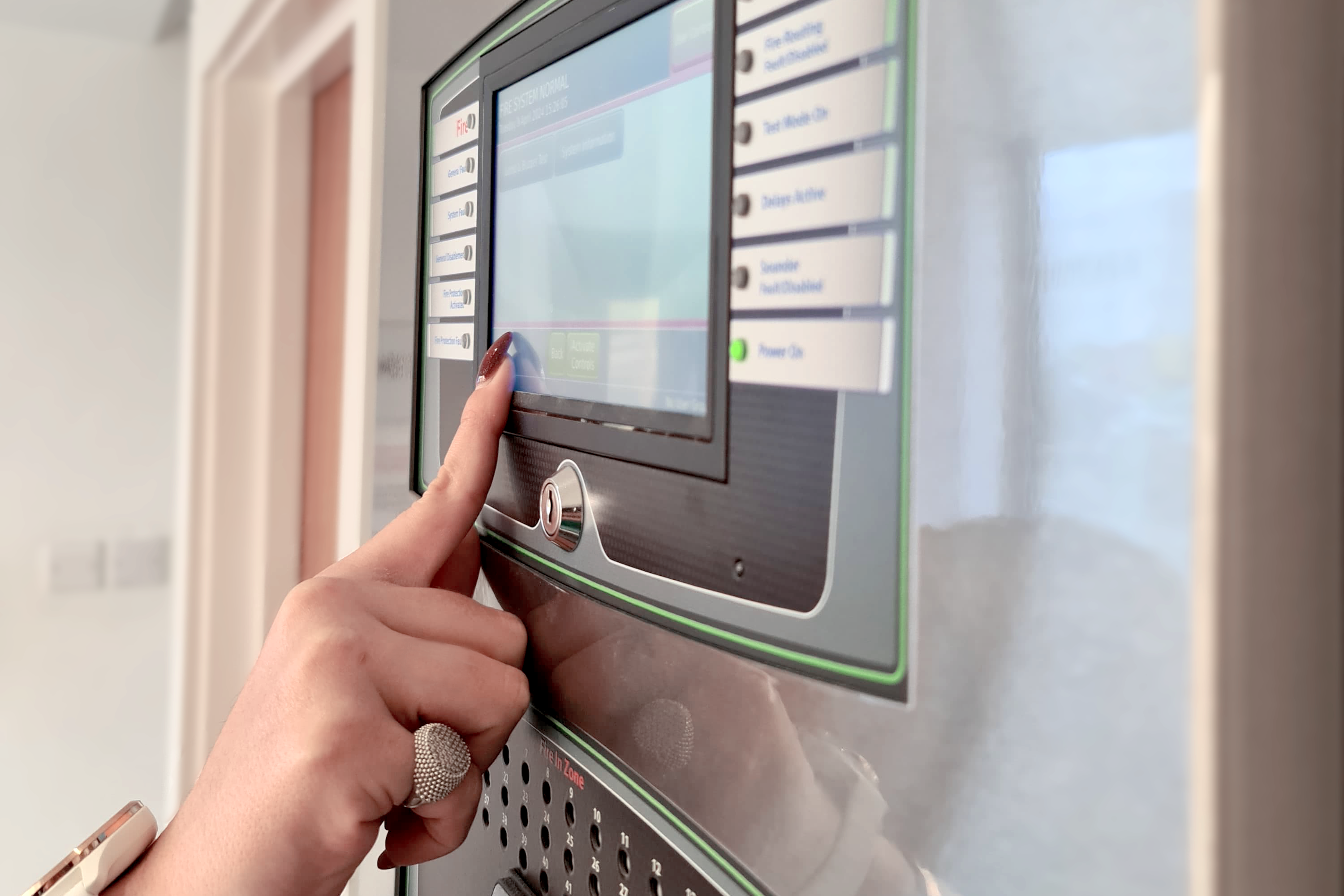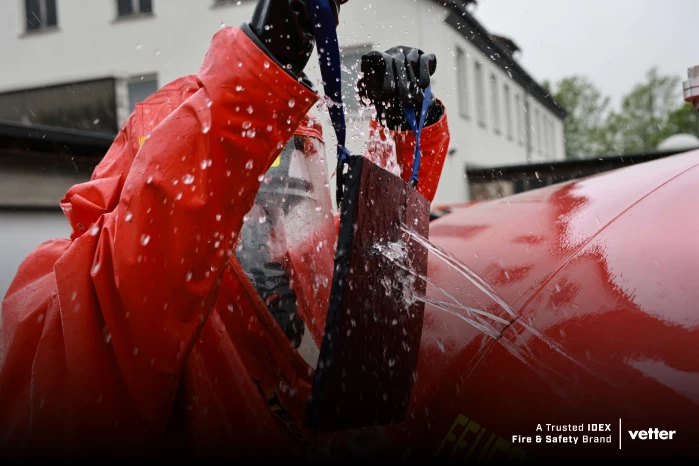Certification benefits the buyer

For those involved in specifying or buying fire products there are challenges and demands to be met in managing and reducing risk as well as ensuring that liabilities are covered, corporate manslaughter obligations addressed and Health & Safety regulations complied with.
Reducing risk remains a key target for most organisations today and testing and certification are effective ways to do this, whether because of legal obligations or voluntary commitment, they demonstrate that products or services meet certain minimum criteria in terms of quality or safety and so can add much needed reassurance to specifiers and buyers.
Arguably the most prestigious of certification marks is BSI’s own Kitemark. It is a voluntary mark, so clearly the manufacturer or service provider has opted to raise their product standard to meet the more substantial quality and safety requirements of a Kitemark scheme. In so doing, they can proudly stand above other non-Kitemark products and services.
Consumers have said they believe Kitemark products to be safer and that they trust them. For fire product specifiers and users it means you, your organisation and your customers can rely on the equipment to offer the best protection.
BSI has an impressive portfolio of fire product certification and has some of the finest expertise in the industry qualified to test and certify fire products.
As such you can look for Kitemark on any of the following products for peace of mind as well as demonstrating your commitment to safety
Fire detection
ALARMS:
The key to a reliable and successful fire detection and alarm system in terms of offering the maximum protection of people and assets, while reducing false alarms, is to use the correct type of detector, in the correct site, to cover the risk as appropriate.
Domestic use:
Smoke/heat or CO alarms:
The primary purpose of the smoke, heat or CO alarm in domestic
dwellings is the protection of life as opposed to the protection of
property and assets.
Combination alarms:
Domestic alarms can incorporate three or four types of sensor such
as heat, smoke and CO within one alarm unit.
Combustible alarms:
Combustible gas alarms warn of the presence of gas. This type of
alarm samples air at regular intervals and provides an immediate
alert to leaks of natural gas, propane or butane.
Voice alarms and alarm systems:
People tend to react quicker and more appropriately to clear
instructions than to the sound of bells or sirens. They relay clear
and precise speech messages, helping to minimise uncertainty
and confusion in an emergency situation.
Smoke alarms for the deaf and hard of hearing:
Smoke indicators for the deaf and hearing impaired take one of two forms a) visual – using a beacon and b) Tactile – in the form of a vibrating pad
Installation of visual smoke alarms in sleeping areas satisfies Part M of the Building Regulations.
Commercial use ;
In commercial use the fire alarm must perform a wider function – it must be linked to Control & Indicating Equipment (CIE) so that the appropriate action is identified and activated.
Smoke detectors:
Sometimes called sensors, are sensitive to smoke in the surrounding atmosphere.
Heat detectors:
These detect changes in ambient temperature and send an alarm
state to the CIE.
Multi-criteria detectors:
These are a combination of smoke and heat sensors which enter the alarm condition when exposed to predefined levels of smoke or heat or both. The alarm state is then sent to the Control and Indicating Equipment (CIE).
Control & indicating equipment & supply
Control and indicating equipment:
The fire alarm control panel or Control and Indicating Equipment
(CIE) is the main switchboard of the fire detection and alarm system
and can give detailed or more general information.
Extinguishing panels:
Fire extinguishing panels or Electrical Automatic Control and Delay
Devices (ECD) are used to protect specific high risk or high asset
value areas such as computer suites.
Power supply:
These are used as part of, or independent to, the control and indicating equipment. They can be used by any application in a fire system that requires an additional power supply, such as aspirating smoke detectors.
Input/output devices:
These are used to add extra functionality to a fire system, acting as an interface between the fire system and its peripheral devices for example to initiate plant shutdown or activate smoke dampers.
Short circuit isolators:
These are used to protect the detection loop from damage due
to short circuit fault conditions.
Sounders:
Sounders or fire alarm devices are the fire detection and alarm
system’s means for alerting the occupants of a building to potential or imminent danger from fire – inside or outside.
Manual call points:
The most reliable form of fire detection is still human observation
so fire detection and alarm systems always include the Manual Call Point (MCP) so someone can physically raise the alarm.
Fire alarm system installation
The Chief Fire Officers Association (CFOA) now strongly recommends third party certification by a UKAS accredited organisation for companies who design, install, commission and maintain fire detection and alarms systems.
Fire fighting & suppresion
Fire extinguishers
All fire extinguishers must be coloured red regardless of content.
However, a patch of colour, taking up no more than 5% of the
surface area will indicate the type of extinguishing content.
The colours and uses are:
RED Water – for wood, paper, textiles and solid material BLUE Powder – for liquid and electrical fires and some metal or gaseous fires with no explosive risk
CREAM Foam – for all liquid fires and wood, paper, textiles and organic material
BLACK Carbon Dioxide – for liquid and electrical fires
YELLOW – Wet chemical – for fires involving cooking oils or fat
Fire ratings:
Extinguishers are related to risk by class and area of fire for which
they are suitable and all fire extinguishers display these prominently
for the relevant types of fire.
Fire blankets:
Often used in kitchens they are also an effective method of smothering fire on a person
Fire hoses & connectors:
The fire hose is perhaps the most important piece of equipment
for fire fighting and so it is important to get the safest and most
reliable ones.
Fire hose connectors:
Sometimes known as “couplings” these are the valves which connect the fire host to the water supply. Naturally, these must be safe and reliable as their role in firefighting is critical.
Hose reels
Fire hose reels are a very effective method of dealing with a fire
in a commercial building. There are two main types of reel and
both are connected to a continual water supply, can be concealed,
fixed, recessed or swinging.
Hydrant and valves:
Underground fire hydrants are connected to the pressurised water
mains laid under public roads. The fire hydrant valve is connected
to the water mains at regular intervals and is joined to a standpipe
to which firefighters connect hoses to fight fires.
Water mist systems:
Water mist systems operate in a similar way to standard sprinkler
systems. However, when activated, in stead of a heavy spray they
produce a fine mist of water.
Types of cert ification CE marking:
Products to be sold in the European Union (EU) that come under
certain European Directives must bear the CE mark – it is a legal
requirement. BSI is a Notified Body to test products against many
European Directives.
CE marking on a product is the manufacturer’s declaration that the product complies with the essential requirements of all the Directives that apply to it. It indicates to the appropriate bodies that the product may be legally offered for sale in their country.
For the majority of fire related products CE marking is mandatory
which means that a Notified Body – such as BSI – has to test the
products to make sure they meet the Directive. CE marking is
NOT a mark of quality.
Fire related EU Directives:
* Pressure Equipment Directive (PED) 97/23/EC
* Construction Products Directive (CPD) 89/106/EC
* Marine Equipment Directive (MED) 96/98/EC
* Low Voltage Directive (LVD) 73/23/EC
* Transportable Pressure Equipment Directive (TPED) 1999/36/EC
* Electro Magnetic Compatibility Directive (EMC) 89/336/EC
Kitemark®
Kitemark has long been understood as one of the world’s premier
symbol of product or service quality and safety.
It is widely trusted and chosen by business and consumer buyers for its unrivalled reassurance.
Specifying Kitemark in any purchasing activities will bring significant benefits to you, your organisation and your community.
*Demonstrate best practice: The essence of Kitemark schemes is the continual assessment which ensures that products or services are regularly reassessed so you can be sure that they will perform consistently and reliably.
* Achieve best value: Buying quality, safe products or services
is always the best long-term option as it saves you the cost of
replacement and so allows you to demonstrate that you have
spent money wisely.
* Save time and money: Kitemark licence holders need to have
robust quality systems in place to help them reduce or eliminate
excessive cost and waste. As such Kitemark products and
services can be more competitive on price.
* Faster decision making: Selecting Kitemark products or services
can help you be reassured that they will deliver a safety, quality
and consistency. Because they are all assessed before receiving
their licence and they have robust quality systems in place you will
know at the outset that they will meet your specification criteria –
saving you time in checking.
* Regulatory compliance: As a result of the Corporate Manslaughter & Corporate Homicide Act 2007 and Health & Safety (Offences) Act 2008, specifiers and buyers can show that they have applied best practice by specifying products or services that are fit for purpose and demonstrated that a duty of care has been delivered. By choosing to use Kitemark products or services, managers can help to show that they have taken their responsibilities seriously.
“The value and importance of the Kitemark in ensuring confident
purchasing decisions cannot be underestimated.” Policy Implementation manager, Gas Distribution Network, UK Specification made simple – just add “Kitemark or equivalent” into your product specifications for all procurement activities because Kitemark delivers quality and safety to you, your organisation and your community.
Visit www.Kitemark.com/specifiers and follow the resources tab for a list of Kitemark Fire products. For more information about product certification visit www.bsigroup.com/firesafety








